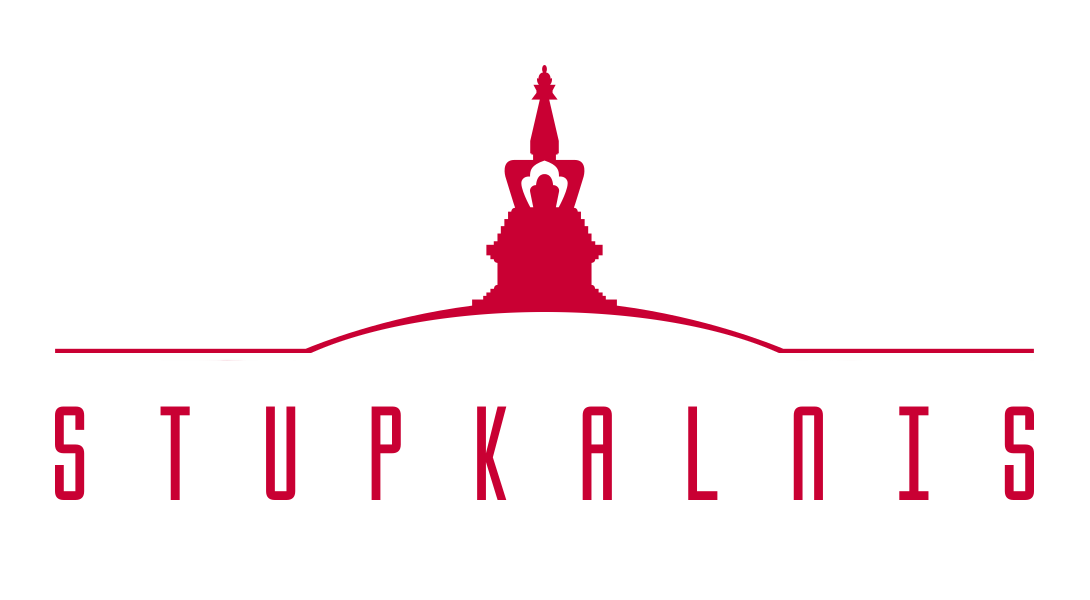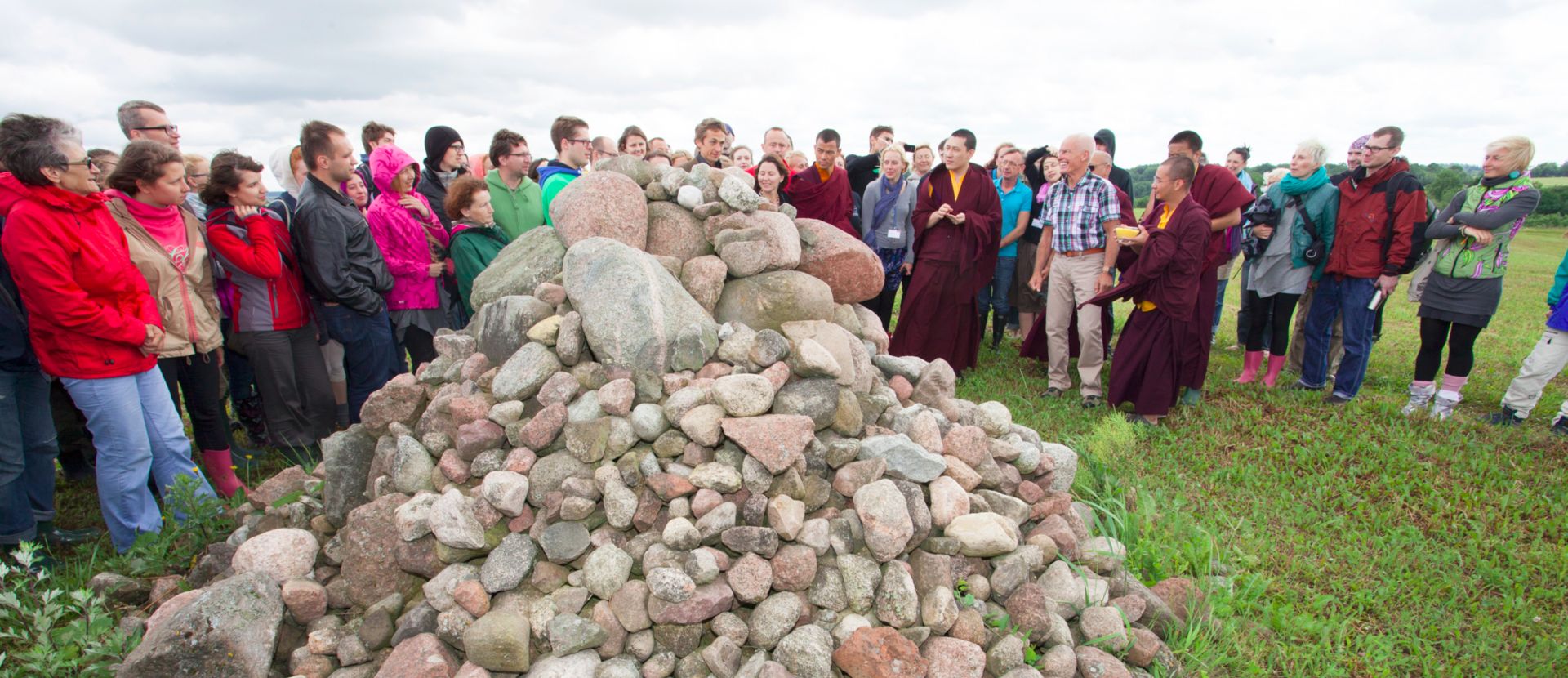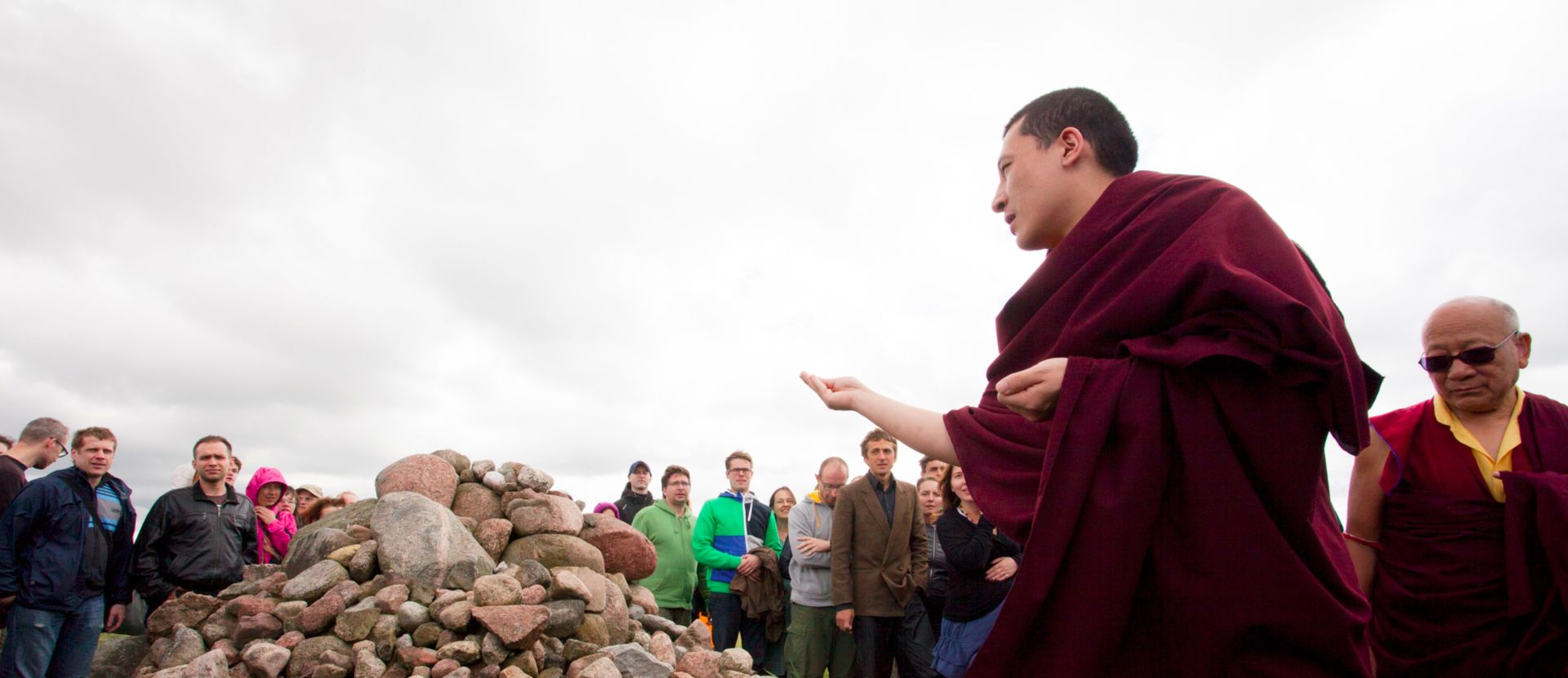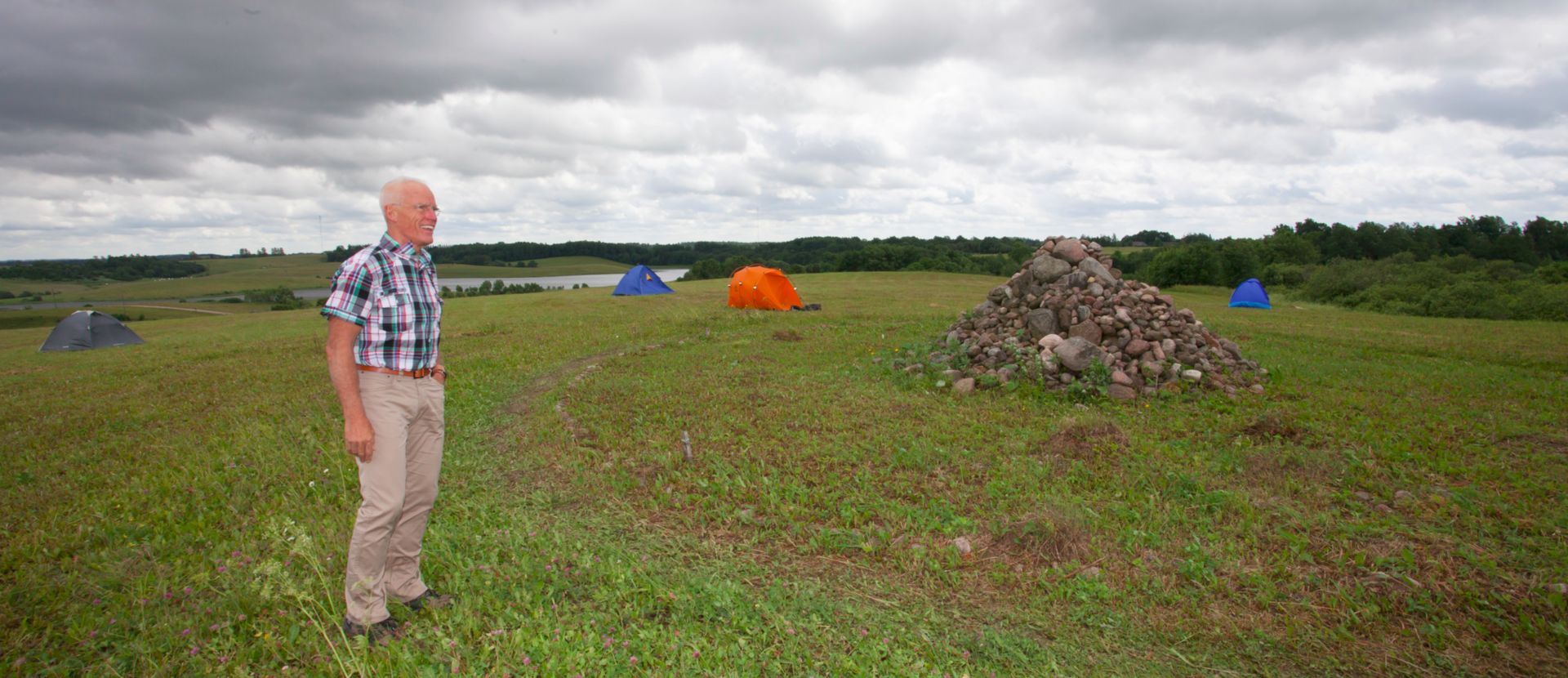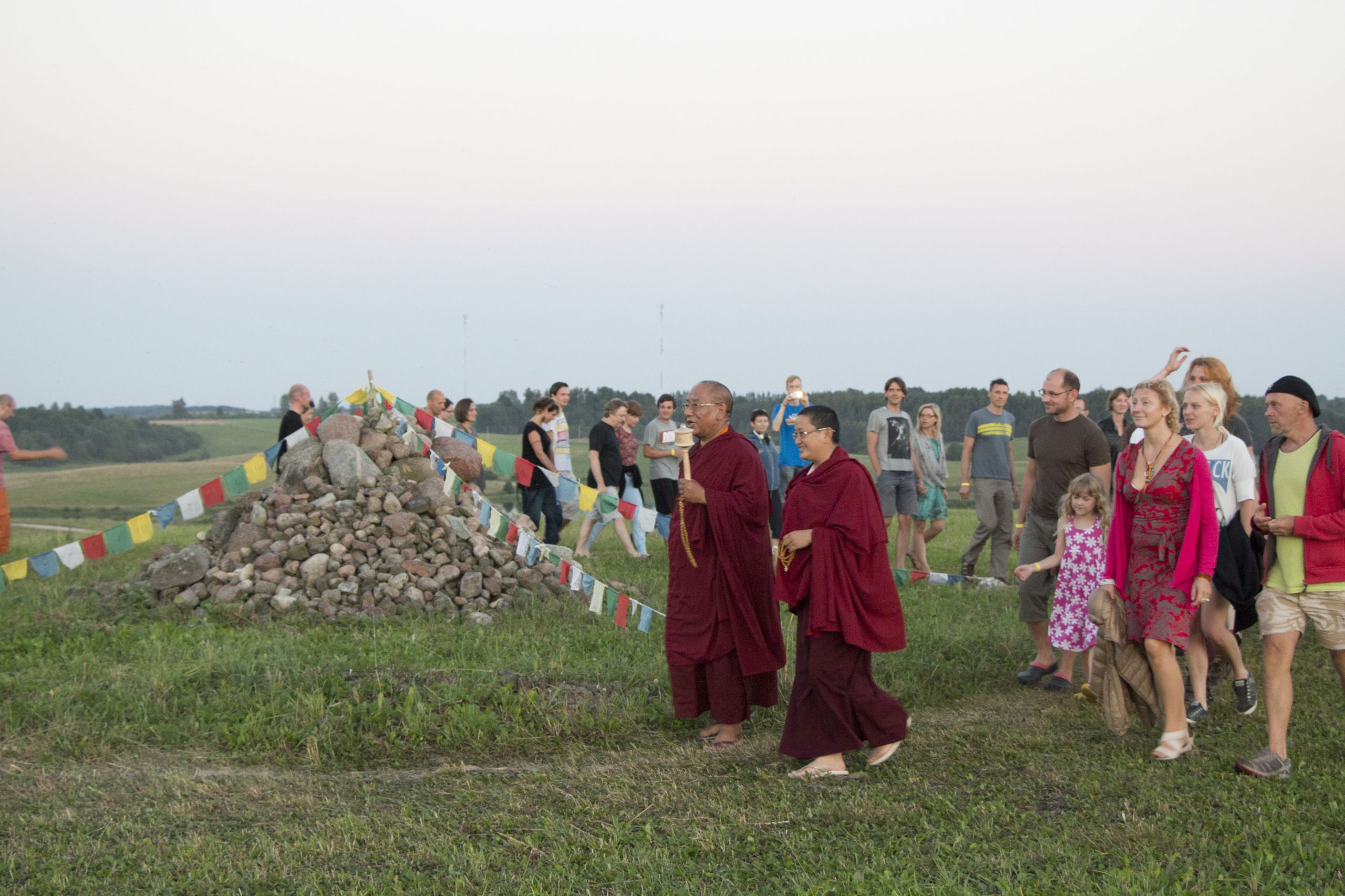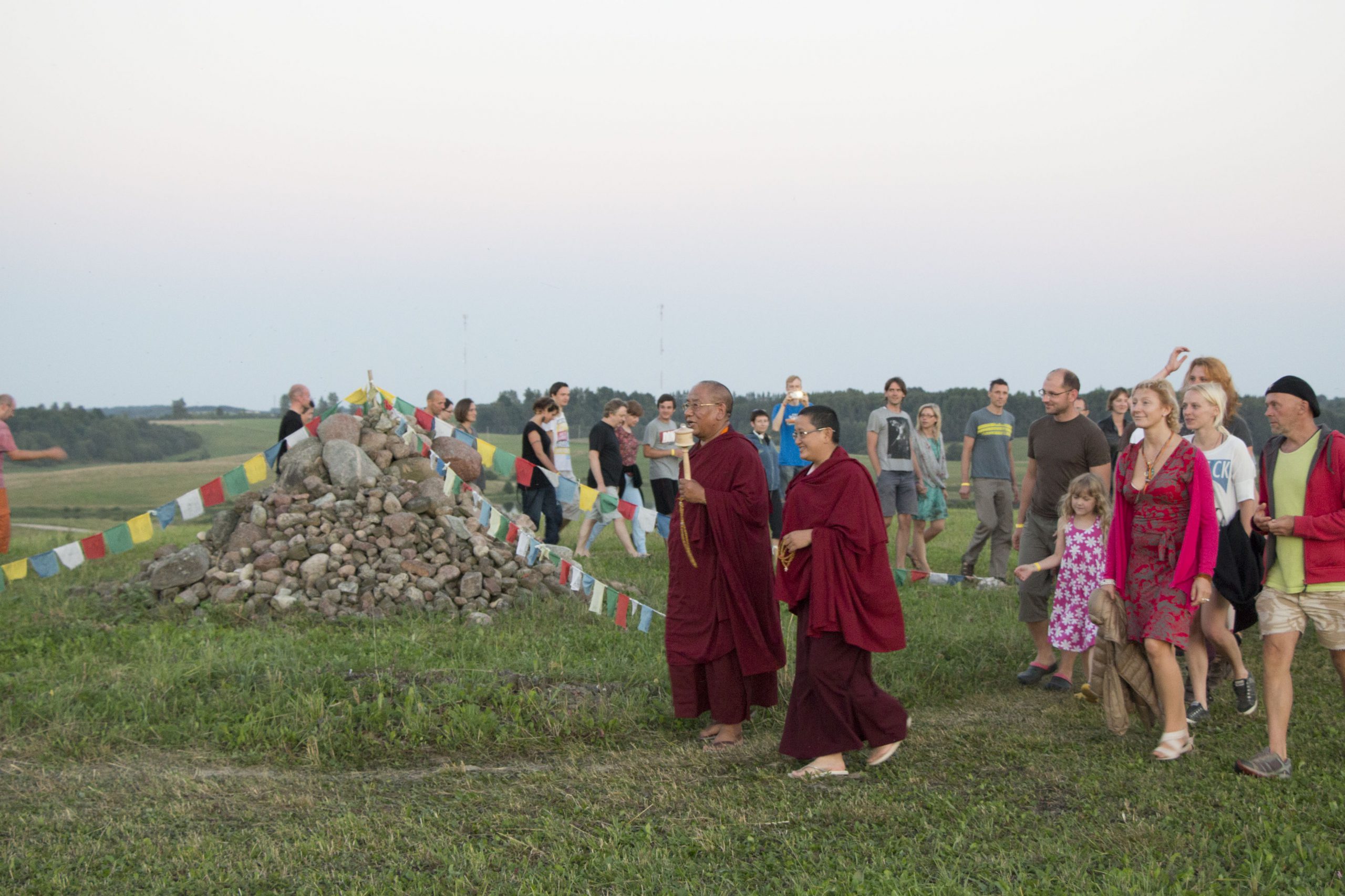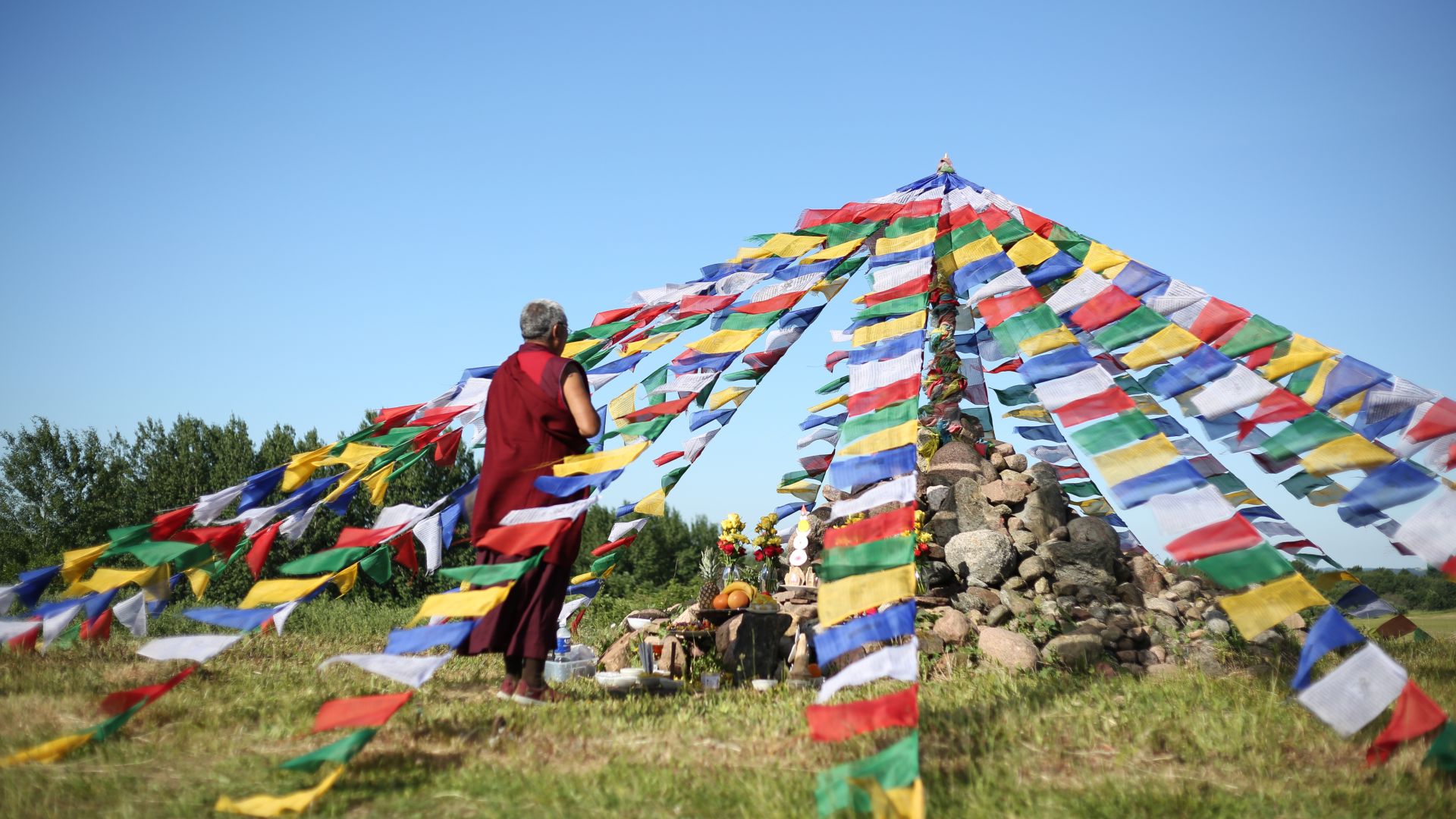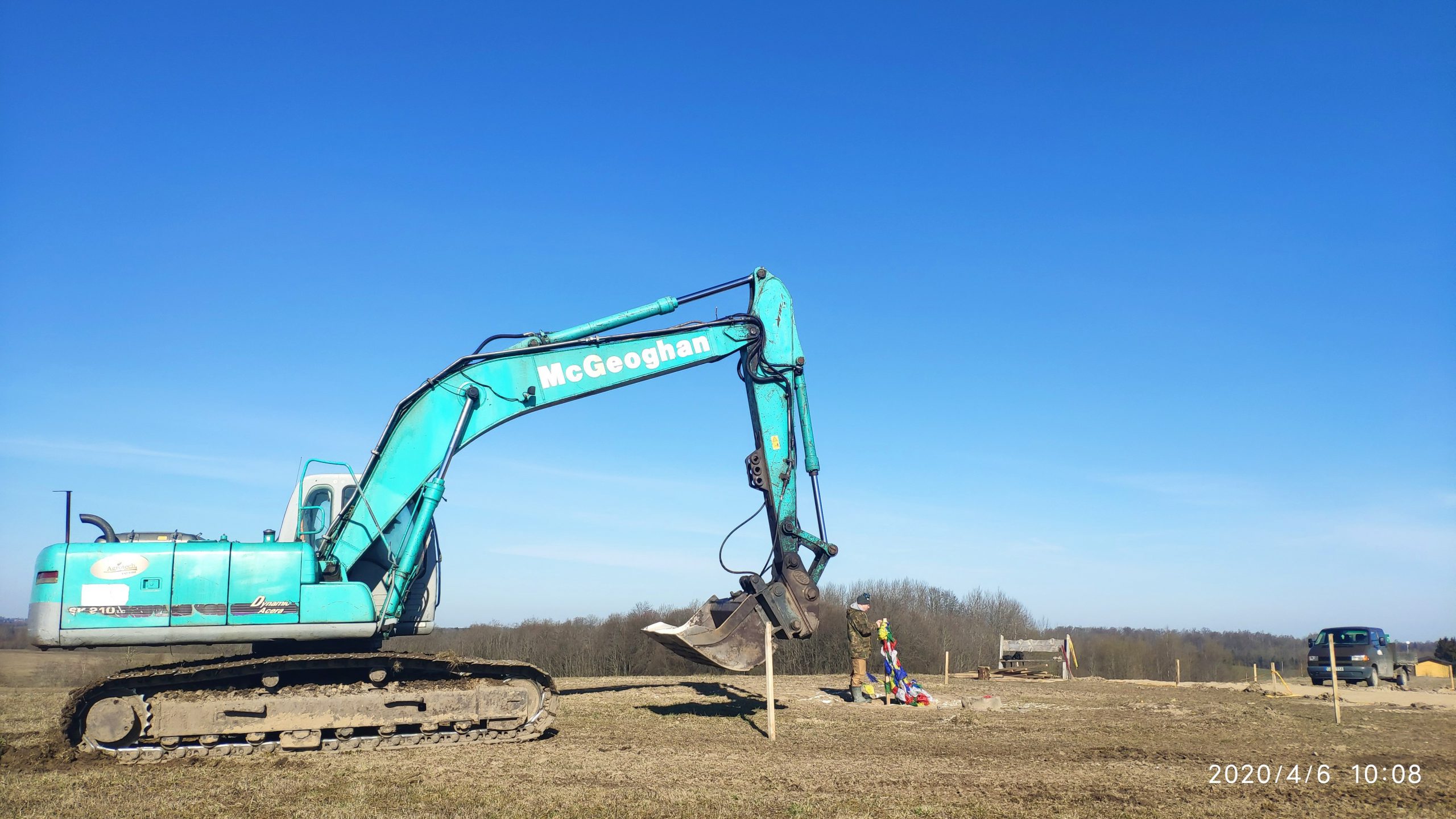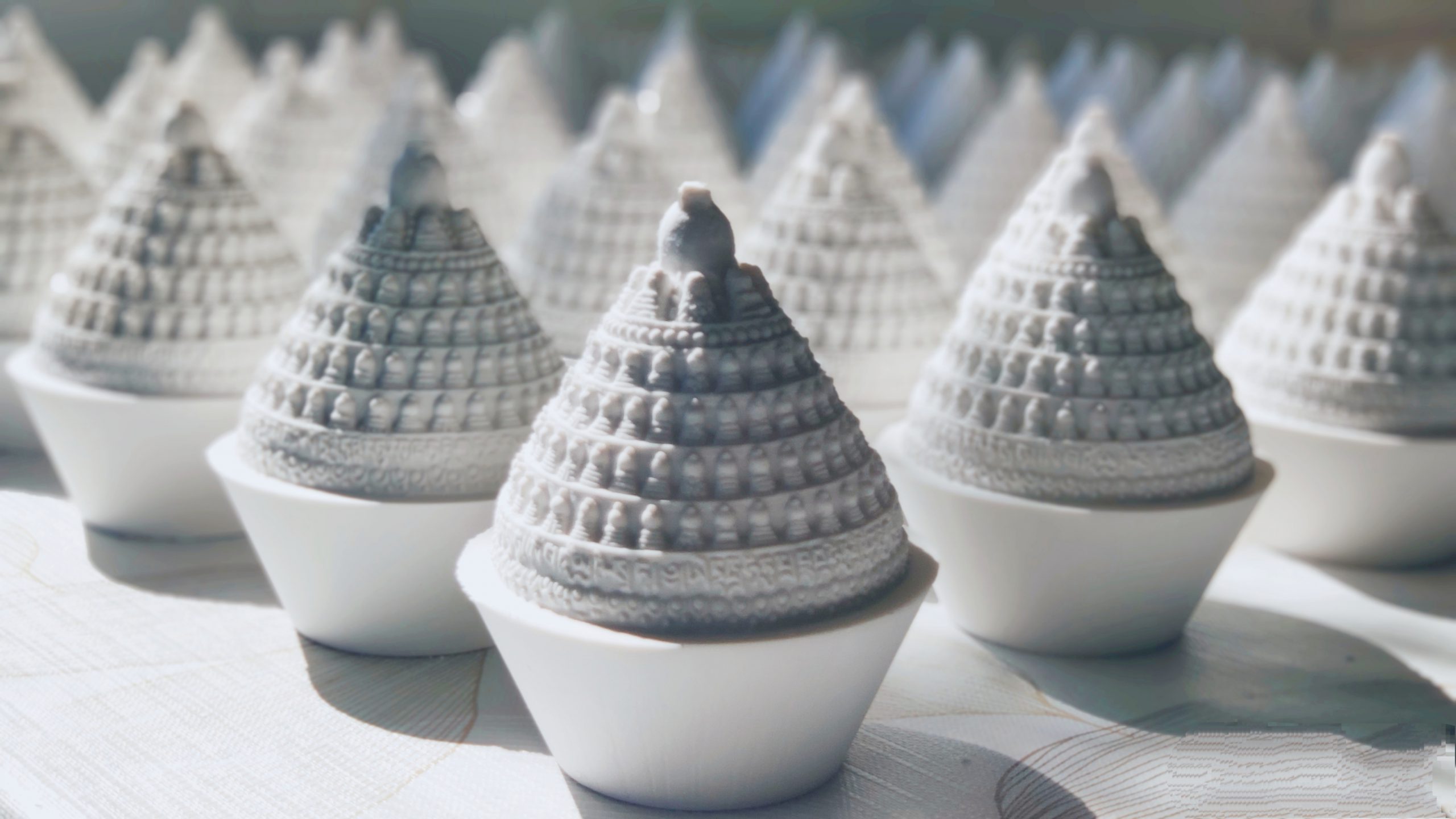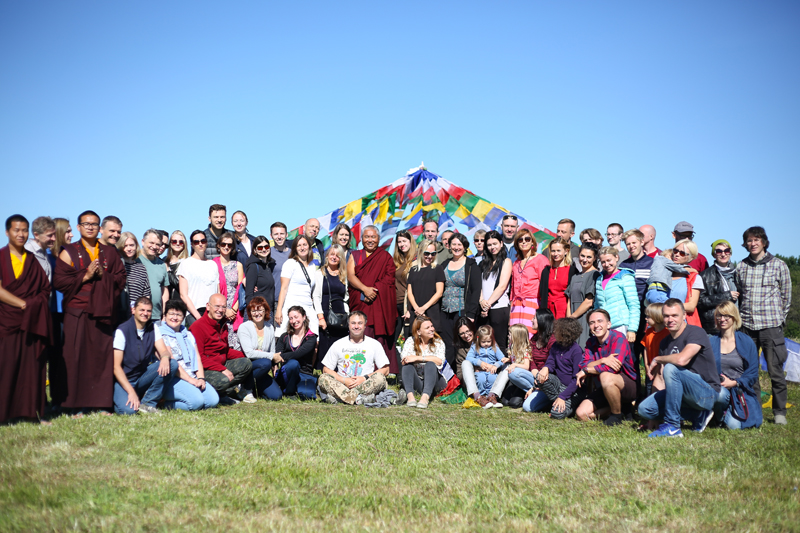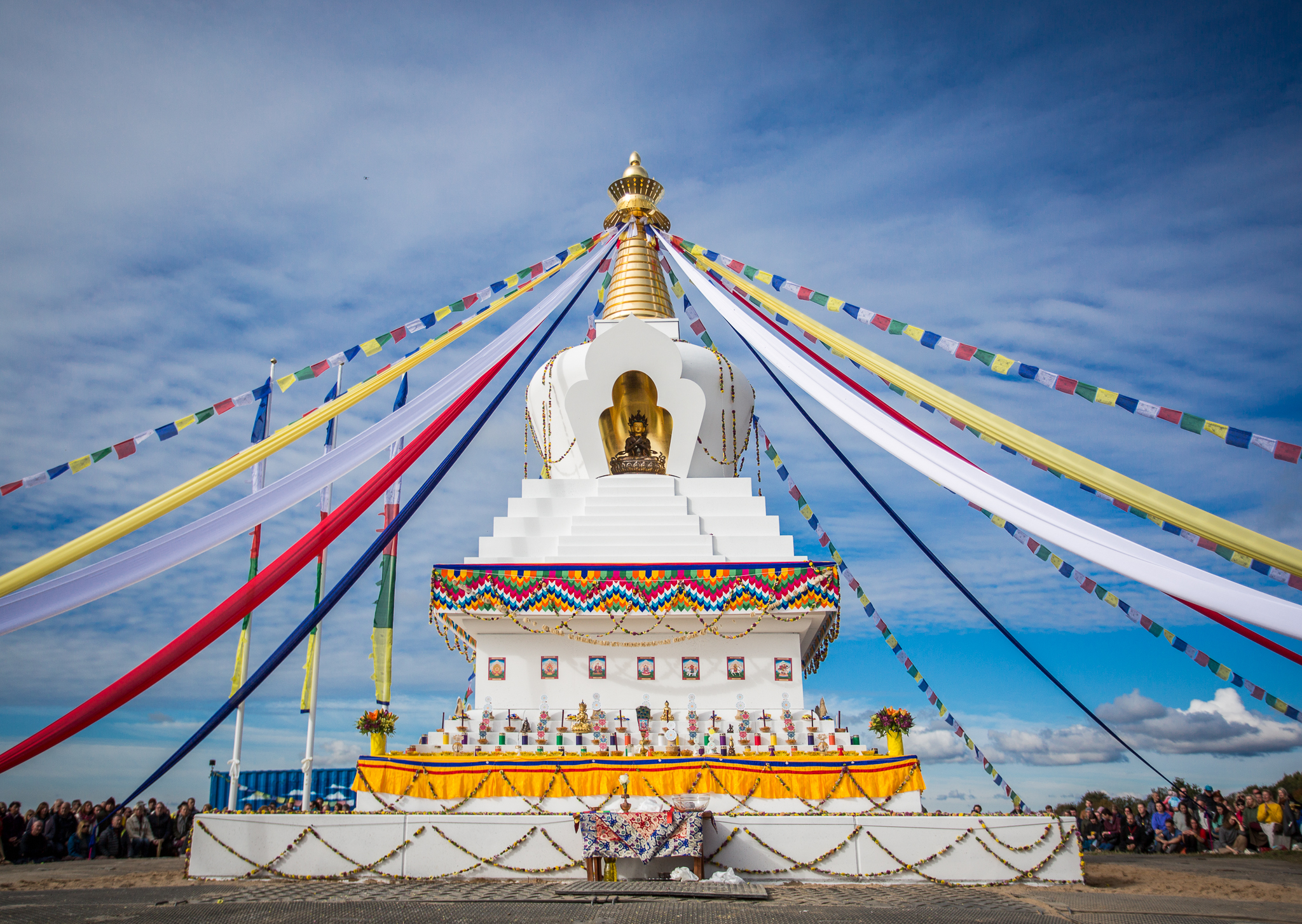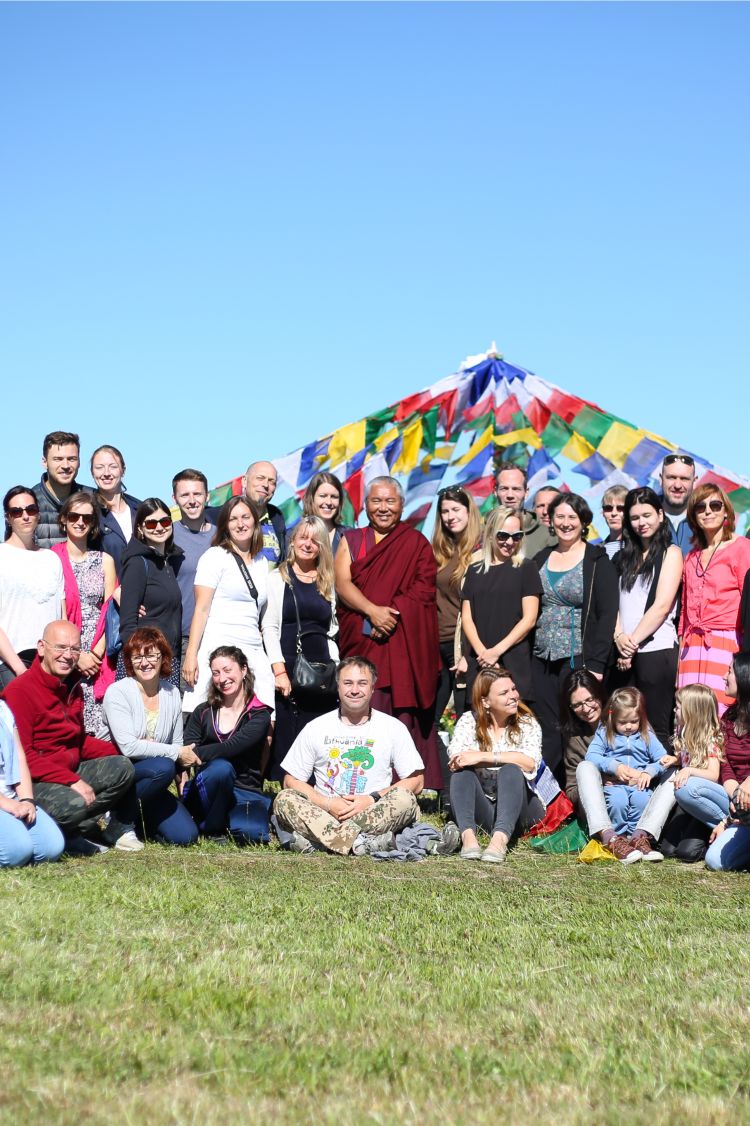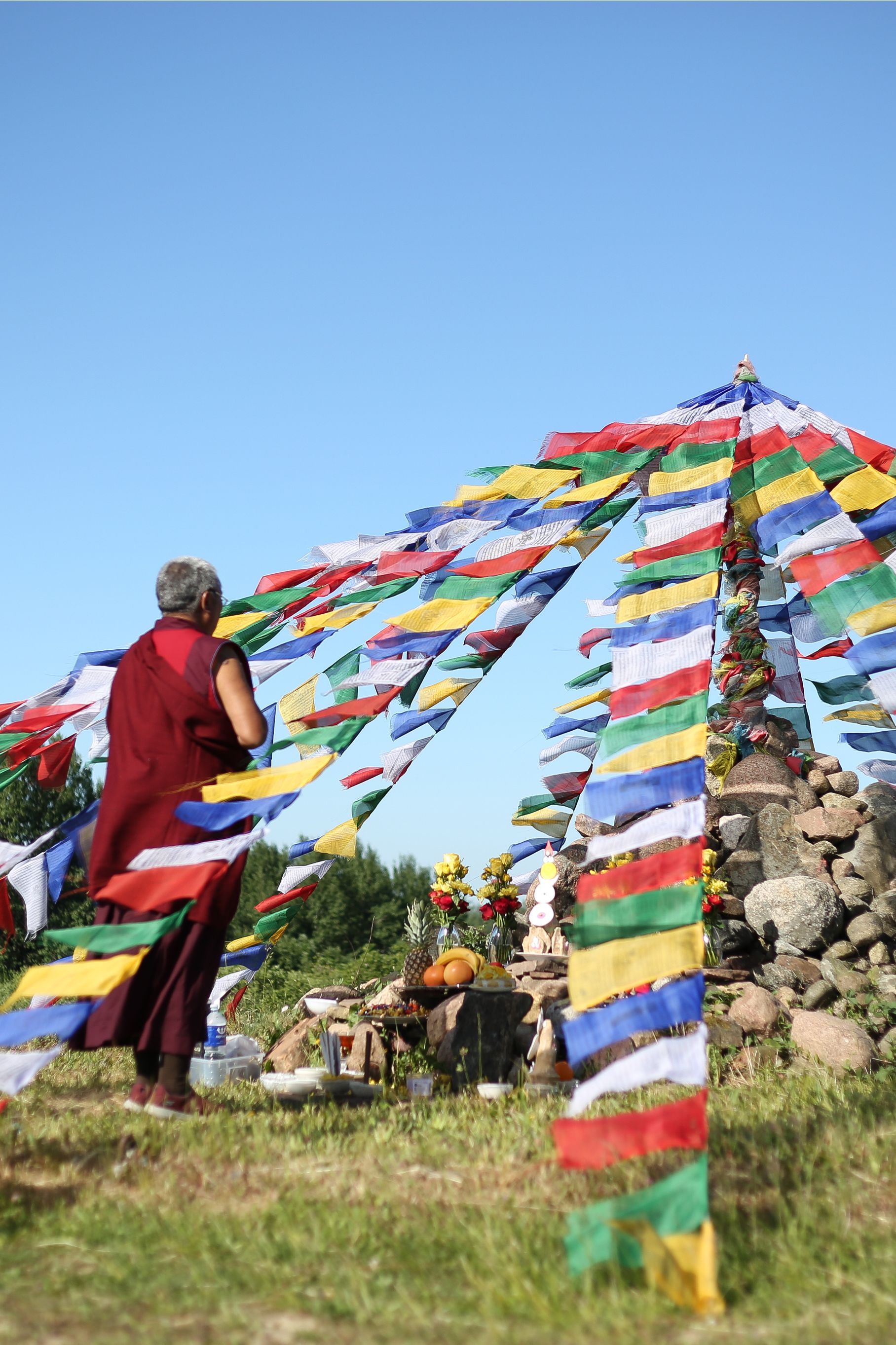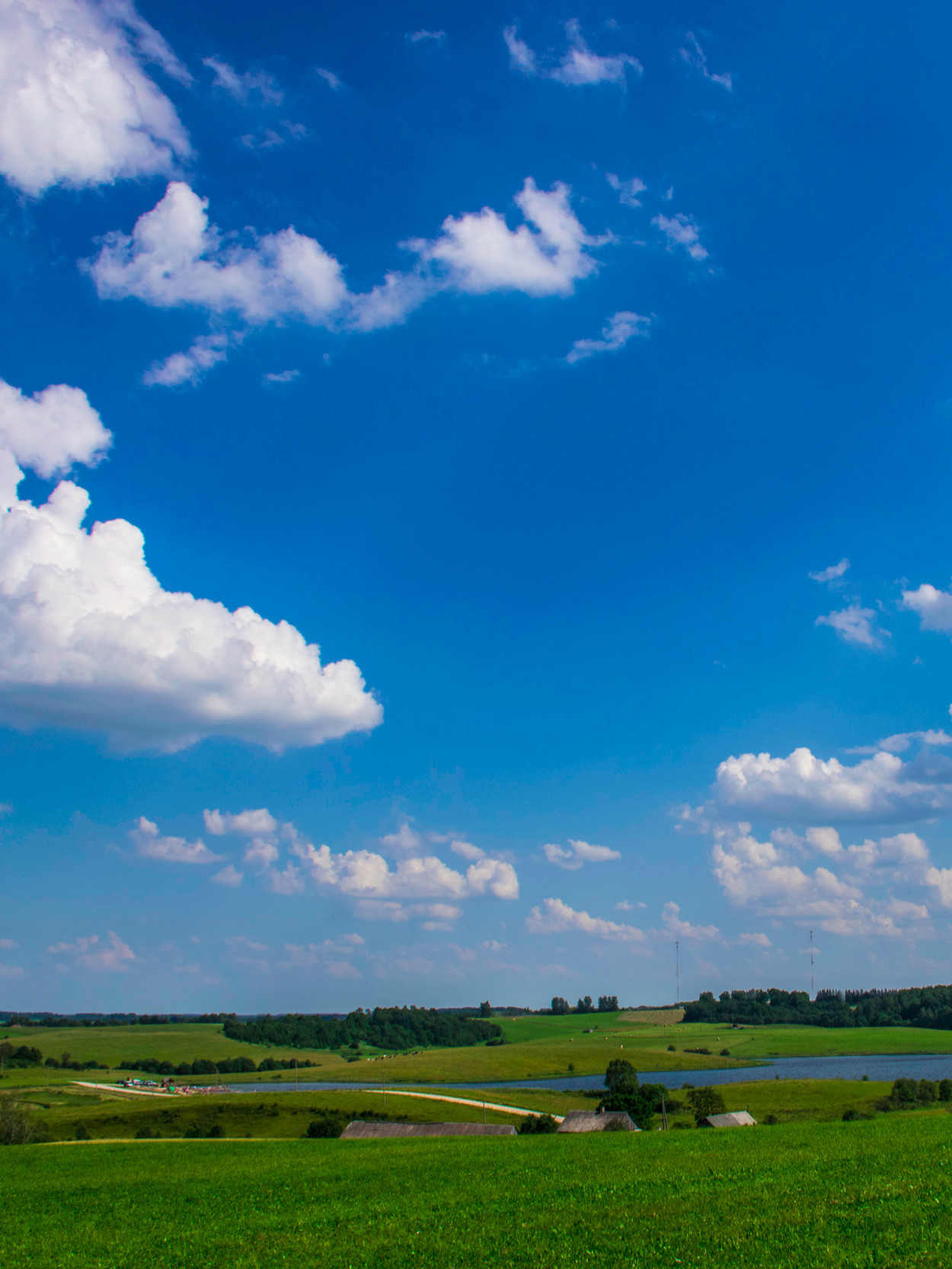Recent News



Stupa consecration 2022
The first Buddhist Stupa in Lithuania
The Stupa – a symbol of the Buddha’s enlightenment – was built at the Stupkalnis Diamond Way Buddhist Centre in the Kelme district, near Kražiai. It was inaugurated on the 24th of September 2022 at a ceremony led by venerable Nedo Rinpoche of the Karma Kagyu tradition. The inauguration was attended by 1500 people from Lithuania and many other countries.
The Stupa (Tibetan: Tschoerten) was built to commemorate the 50th anniversary of the Diamond Way School, founded by Lama Ole Nydahl, and the 25th anniversary of the Diamond Way School’s activities in Lithuania. Lama Ole and Hana Nydahl were the first Western disciples of the 16th Gyalwa Karmapa, the head of the Karma Kagyu tradition. His Holiness requested them to teach Buddhism in the West and their work has been hugely successful.
Stupas are symbols of the true nature of mind. They point to the timeless, indestructible characteristics of enlightenment: fearlessness, joy and active compassion. After 2500 years of the Buddhist tradition, Stupas remind us of the possibility that all beings can reach enlightenment.
If one observes a stupa from the bottom to the top, every level represents the steps of development towards enlightenment. The construction base of a stupa points towards the five elements of earth, water, fire, air and space; they correspond to a quadratic base, round middle part, triangular top, half moon and sun, as well as drops for space and consciousness. Beyond that, the stupa represents Buddha, Dharma, and the community of practitioners, the most important reference points in the life of every Buddhist.
Stupas contain precious Buddhist substances like mantras, relics, and healing substances, as well as symbols for body, speech and mind of the Buddha. At the places, where Stupas are built, one can simply enjoy them, meditate next to them, or circle them in accordance with ancient tradition in a clockwise direction. It is said that the merit if a stupa was circled, is comparable to the merit of giving a gift to a Buddha. Buddhists think that the wishes made in the proximity of a Stupa will become reality.
Whichever religious tradition one belongs to: Stupas remind us of the possibility of personal development, which benefits many; a development that is beyond any affiliation and without specific religious institutions.
Stupas are manifestations of countless wishes. Through them, may permanent happiness be established in the world.
This charitable event was organized by the Buddhist Community of Diamond Way Buddhism Karma Kagyu Lineage in Lithuania. All collected funds remaining after covering the event organizational expenses will be allotted to cherishing Buddhism values.
Stupa
Lama Ole Nydahl has visited Stupkalnis many times, and every time he blessed the current Stupa place. H.H. the 17th Karmapa Trinley Thaye Dorje visited Stupkalnis in 2012 and suggested asking Sherab Gyaltsen Rinpoche about the type of and the place for the Stupa. In 2013, Sherab Gyaltsen Rinpoche visited Stupkalnis for the second time, and not only chose the place, but also the type of the Stupa – Buddha’s Descent from Gods’ realm. In the summer of 2017, Lama Ole Nydahl invited Nedo Kuchung Rinpoche to build and inaugurate the Stupa in Stupkalnis.
Stupas are monuments for peace in the world. They are constructions which express the pure nature of the mind in a perfect form.
Stupas have been built in Asia for centuries, while in Europe only since 1982. Stupas in Europe mean the strengthened transmission of Asian Buddhism coming to Europe and that the Dharma can grow here. Their symbolism is multifaceted: for instance, a stupa stands for various Buddha wisdoms, but it also may refer to the community of practitioners, the Sangha. Generally, it is said that the spiritual influence of a stupa is so great that those who revere them, help during its construction, or those who live in the vicinity, experience its positive effect as a source of peace, happiness, and prosperity.
Those who circumambulate the stupa clockwise while making wishes for the benefit of all beings experience a blessing, which enables one to live a long, meaningful, and exemplary life.
Stupa also purifies the atmosphere making it possible for realized teachers to be reborn there and that the Dharma (Buddha’s teachings) can grow.
Stupa brings peace and prosperity to the country in which it is built. It protects the location where it stands, such as a Buddhist center.
Stupkalnis
Buddhist Retreat Centre in Stupkalnis is the main Diamond Way Karma Kagyu Lineage centre in Lithuania and the biggest international retreat centre in Baltic countries, which connects Diamond Way Buddhism in the Baltics: Estonia, Latvia, Lithuania, Belarus, Kaliningrad region and neighbouring countries.
It is one of over 650 Diamond Way Buddhism centres, all started by Lama Ole and Hannah Nydahl at the request of the 16th Karmapa Rangjung Rigpe Dorje. Currently, the main lama of Karma Kagyu lineage is H.H. the 17th Karmapa Trinley Thaye Dorje.
Diamond Way Buddhist Community purchased a piece of Stupkalnis land in 1997. Since 1998, the Community has been organising international Buddhist courses here. Today, summer courses are held in Stupkalnis retreat centre each year, often in the main house with a meditation room that can fit around 200 people. In addition, there are three huts available for Diamond Way buddhist retreats.
H.H. the 17th Karmapa Trinley Thaye Dorje, Lama Ole Nydahl, and Sherab Gyaltsen Rinpoche have all given teachings here.
Subscribe to the news
and you will get latest information about Stupa Project
Teachers
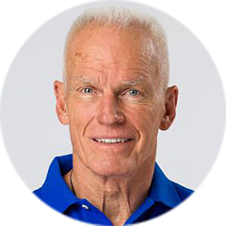
Lama Ole Nydahl
Lama Ole Nydahl and his late wife Hannah were the first Western students of H.H. the 16th Gyalwa Karmapa Rangjung Rigpe Dorje. For over 40 years, Lama Ole Nydahl has taught Diamond Way Buddhism to tens of thousands of students and founded over 650 Buddhist centers worldwide. Lama Ole Nydahl specializes in the practices of Mahamudra (the “Great Seal”) in which a realized teacher can give an experience of the limitless nature of mind to the student, and Phowa—a rare, centuries-old method of conscious dying. He teaches his students to combine lay Buddhist practice with independent thinking and the maturity that comes through life experience. A recent winner (13th of June, 2015) of the UNESCO prize for Dialogue, Coexistence, and Peace, Lama Ole Nydahl also underlines the importance of democratic principles in the society, especially freedom of speech and women’s rights.
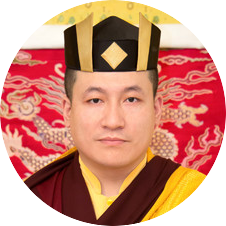
17th Gyalwa KARMAPA Trinley thaye Dorje
Thaye Dorje, His Holiness the 17th Gyalwa Karmapa is the head of the Karma Kagyu lineage of Tibetan Buddhism. He is the spiritual leader of around 900 monasteries, institutions and centers in 68 countries around the world.
Karmapa regularly visits Diamond Way Buddhist centers around the world. He has often given teachings and empowerments at the Europe Center in Germany, the main international meeting point for Diamond Way Buddhists. Lama Ole Nydahl describes Karmapa as being the guarantor for the authenticity of our Karma Kagyu lineage.
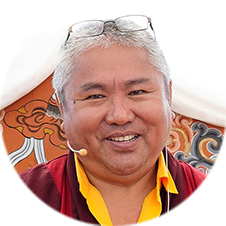
NEDO KUCHUNG RINPOCHE
Rinpoche kindly accepted Lama Ole Nydahl’s invitation to build and inaugurate a stupa in Stupkalnis in 2022.
Nedo Kuchung Rinpoche was born in 1962 in India, and recognized by H.H. the 16th Gyalwa Karmapa as the sixth reincarnation in the Nedo Kulha lineage. Until the age of 18, Rinpoche was educated under the guidance of H.H. the 16th Gyalwa Karmapa in Rumtek monastery. He then studied for three years in Ladakh before returning to Rumtek for a three-year retreat, where he practiced the tantras of Marpa, the Six Yogas of Naropa, and various Mahamudra transmissions. When he was 25, Rinpoche was appointed Vajramaster of Rumtek monastery, and he remains today the main Vajramaster of H.H. the 17th Karmapa Trinley Thaje Dorje. Nedo Rinpoche is currently responsible for Shamar Rinpoche’s monks as well as all activities of the Karma Kagyu lineage in Sikkim.
Retreats
In order to get the best possible benefit from our increasingly precious time, it is very useful to spend time in an existing enlightened power field. Although the truth state is the same everywhere, the power fields of the joy state condense most strongly where the blessings for them have been specifically placed. The desired increase in mental surplus will be more effective in such places. The prerequisite for the full advantage of such a retreat is the protection of Buddhist refuge and the decision to follow the Diamond Way path of the Karma Kagyu lineage.
Lama Ole Nydahl
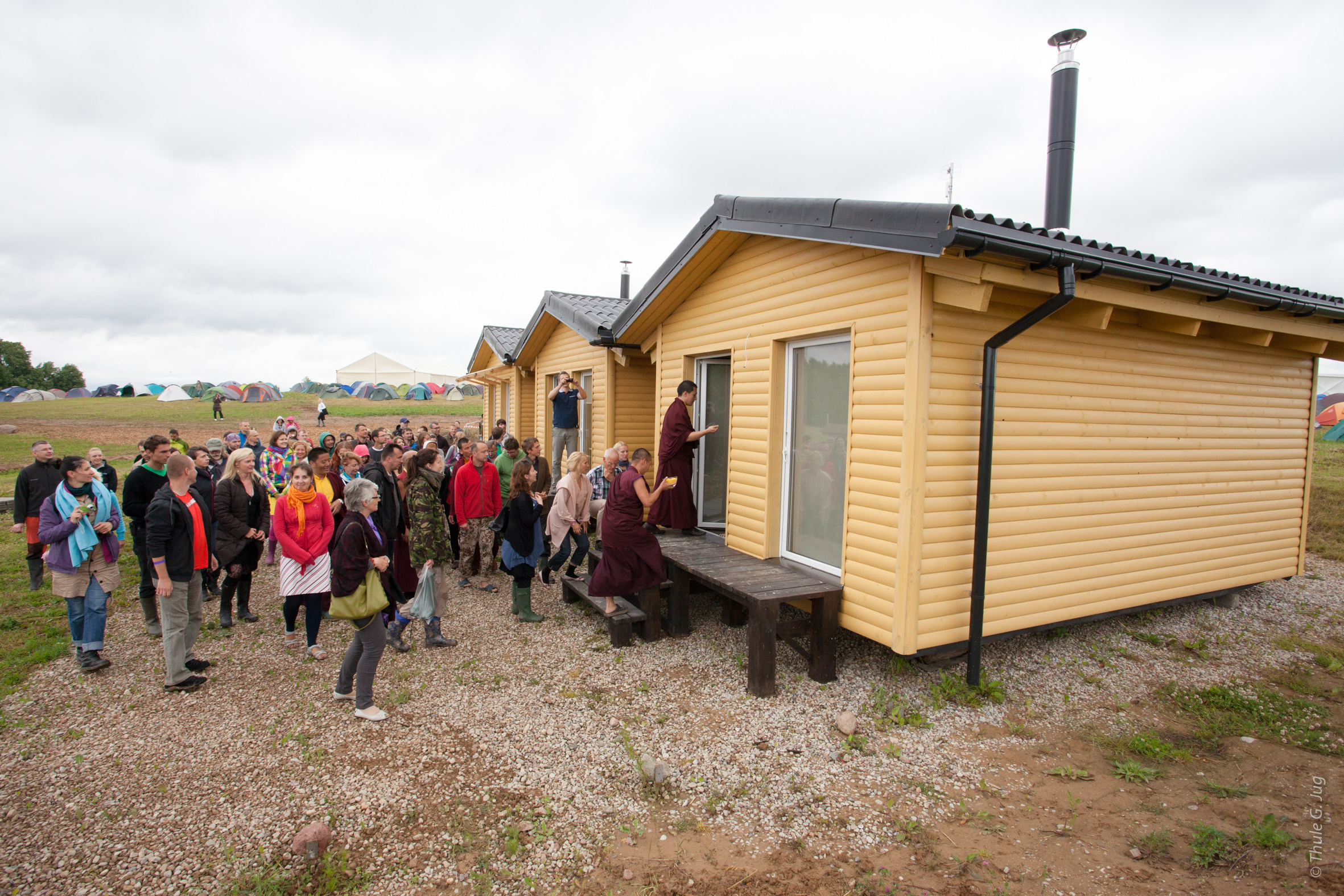
What is the difference between a retreat and daily meditation?
One learns to know ones mind through meditation. In this process, we loosen the hold of inner habits and outer expectations. A retreat tremendously amplifies this effect by creating more distance to everyday life. Without the distraction of daily life minds calmness and insight can be more deeply and fluidly experienced. The Diamond Way view allows us to connect the experiences of a retreat with those of daily life.
Please note
Meditation retreat means certain experience and maturity of practitioner, so one is supposed to start in one of our city centers. Check which one is closest to you. Also you can try public program or so called group retreats at Stupkalnis retreat center. You can follow Stupkalnis facebook page for more information.
Arriving
We kindly ask you to register via email stupkalnis@budizmas.lt at least two weeks before your arrival.
Donation

You are more than welcome to support Stupkalnis retreat centre. You might want to consider a regular or one-time donation.

Bank transfer:
Budistų bendruomenė „Deimantinio Kelio budizmo Karma Kagju tradicija“ BANK: AB SEB bankas SWIFT: CBVILT2X LT06 7044 0600 0814 4207

Use the PayPal link below for a quick payment Support Stupkalnis retreat center development
How to get to Stupkalnis
Nearest airports to Stupkalnis are in Vilnius, Kaunas, Riga and Palanga.
By Car
Take A1/E85 from Kaunas or Vilnius in the direction to Klaipeda or from Klaipeda in the direction to Kaunas. Unless you travel with a commercial vehicle (truck or van) you do not have to buy vignettes or pay Lithuanian road tax in any other ways. After 205km from Vilnius, 108km from Kaunas, or 108km from Klaipeda you should take A12/E77 in the direction of Šiauliai. Then after 20km take road 2104 to Kražiai. From Kražiai to Stupkalnis only 2.6km left, so here you can use Google Maps or other to get to Supkalnis.
By bus
You can go by bus from Vilnius, Kaunas, Klaipeda or Palanga till Kryžkalnis. From Kryžkalnis it is either shuttle or autostop or on foot (22 km from Kryžkalnis to Stupkalnis). The shuttle will be organised only during the course in September, at another time please drop us an email at stupkalnis@budizmas.lt a couple of days before your planned trip. Bus timetable you can find here

